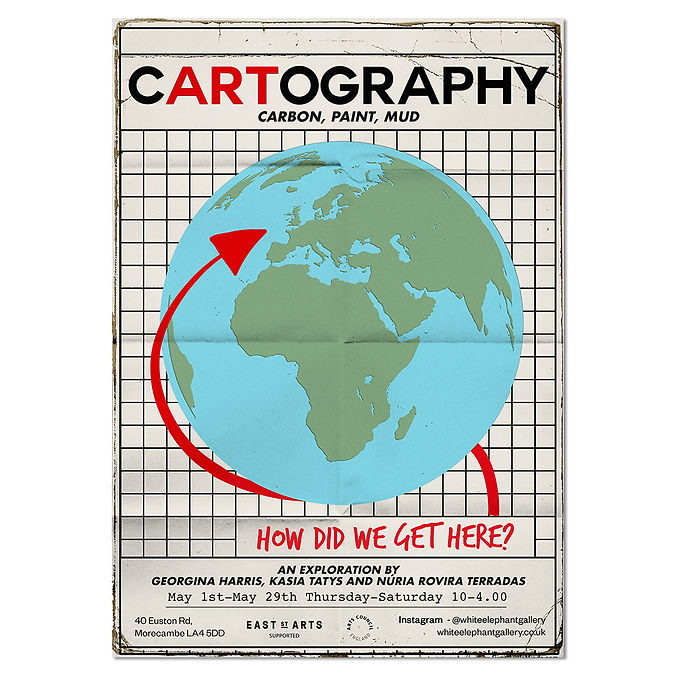


CARBON PAINT MUD
There was a time when it all seemed so simple. Once equipped with the right training and qualifications you would head to the metropolis to find your own slice of gold. Now the shifting tides of history have placed all that in doubt.
Our three young exhibitors Georgina Harris, Núria Terradas and Kasia Tatys stand together in that transitional zone between college and career. A time that has for them exactly coincided with the Covid pandemic. They met and became firm friends’ and collaborators while at art college on the same degree course at Lancaster University. As if to concentrate their powers further they have come together as a new cultural entity called GAP. The current exhibition comes out of this time and asks the question How did we get here? For them specifically, here, is simultaneously a beginning, a pause and an attempt to navigate a way forward. They sense the confusing climate of the current times and wonder if this hiatus that has been created by Covid marks a fault line between one era of the recent familiar past and another new, less certain, era about to be born?
There is a yearning in Tatys’ dark brooding worked on and worked into carbon and charcoal surfaces. They are a kind of meditation on ancestry, time and convergences. Perhaps it is the enormity of what we all feel is wating just around the corner, that impels Tatys’ to look back into her own personal hinterland. Back into the Poland of dark forests and memories of invasions and dispersed generations. This reminds us of the old alchemical struggle to turn dark matter in something of great value, something that really matters.
Terradas strikes a different note as she observes the remarkable marine environment offered by the vast expanse of nearby Morecambe Bay. Inspiringly she brings new eyes to the magical alternating lost and found world of the inter-tidal margins. Perhaps it is the contrast of this part of the English coast to her native Catalunya that inspires her so. And yet there is so much more than a simple fascination with this liminal realm. Not far below the surface is a concern with the state of the world. A fear that we may have irretrievably lost our balance with nature. And that we have blindly entered a new time where human impact is defining the metabolism of the planet. Terradas wonders if there is a way of capturing the significance of this titanic shift in our relationship with the natural world; and asks how do we face the challenges that are the inevitable consequences of what some people are calling the Anthropocene.
Maybe part of the answer to all this is found in Harris’ approach to her work. Here she seeks to break down the barrier between, on the one hand, the phenomenal world of nature and on the other hand the preconceptions and routine objectifications of our world. There is a refreshing directness to how Harris takes on her task. On one level it is simply about the joy of painting outdoors in nature, while simultaneously it seeks to overturn the established and conditioned ways of seeing. Time will tell how successful Harris has been in her endeavour to impact on our entrenched visual status quo. Either way we can admire the pluck and ambition of these three young female artists as they begin to make their way into what is a fast-changing complex world.
Meanwhile, all three of our exhibitors affirm a commitment to their collective art practice and to being in a part of north Lancashire they have come to call home. A region they find so much sustenance and inspiration from. Perhaps they have discovered something about this rather forgotten corner of the world, something we could all come to appreciate.
Oulan Nagardo, Budapest, April 2021